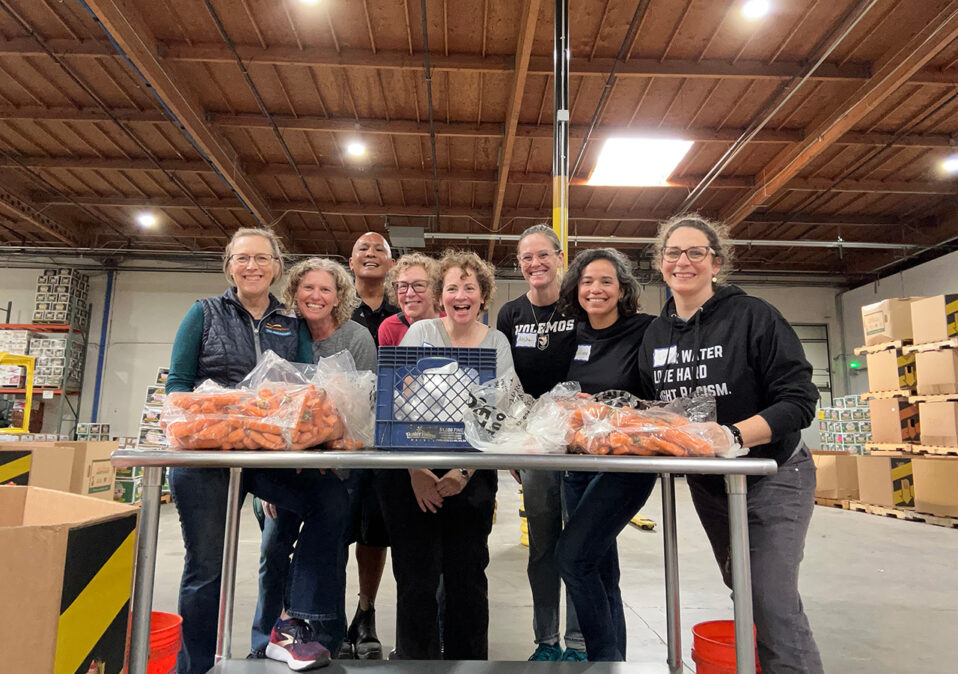By Jenni Mangel, Jewish LearningWorks’ Director of Educational Leadership
Two important things happened in 1898. Those of you who have been following our materials closely this year might know that was the year Jewish LearningWorks was established as the Jewish Education Society (JES). JES later became the Bureau of Jewish Education and is now Jewish LearningWorks. We have enjoyed celebrating our 125 year timeline of Jewish educational leadership with all of you this year.
The other significant event of 1898 was the presence and leadership of a woman named Ray Frank on a pulpit in San Francisco, then a rough and tumble post-gold rush town of 30,000 souls. In those days public leadership roles were uncommon for women, who mostly wore long skirts, shirts with poofy sleeves and corsets. Ray Frank broke the mold by pursuing work as a journalist, education at the Hebrew Union College, and serving the community as a preacher.
Lest we forget our feminist history and the slow pace of change, it would be nearly 75 years before Sally Priesand was ordained as a reform rabbi in 1972, followed by Sandy Sasso in 1974 by the reconstructionist movement. Another decade passed before Amy Eilberg was ordained by the conservative movement in 1985 and another quarter century before Sara Hurvitz received the first authorization for formal communal leadership in the modern orthodox community in 2009, roughly 110 years after Ray Frank led the community of San Francisco.
As a girl growing up in a small northern California town in the 1980s I still mostly saw men in communal leadership positions – on the pulpit and as the board chair. Adults told me all the time that women could be anything, but it still required my imagination to see myself in a significant leadership role in the community. But I was not the only little girl being taught to dream big and create action plans with which to pursue those dreams. By the time I entered the workforce in the early 2000s my peers were rabbis and we all benefited from the guidance and support of women professionals who preceded us. Over the last quarter century we have seen more women serving as board presidents, executive directors, and rabbis of our community.
Despite this rise of female voices, as of 2021, “most people working at Jewish nonprofits are women. But most CEOs of Jewish nonprofits… are men” (Leading Edge, The Gender Gap in Jewish Nonprofit Leadership). The research that Leading Edge did was limited to the experience of cis-gender women, however, they partnered with Keshet to conduct peer-led listening sessions that centered gender identity, race, disability and other identity markers in the conversation (highlights of those conversations are captured here). As we continue to work towards gender equity in communal leadership it is important that we concurrently seek equity in leadership with people of multiple marginalized identities. There is no doubt in my mind that we are moving towards diversity and inclusivity in the Jewish community, yet it is also clear to me that we still need to cultivate diverse voices in positions of Jewish leadership.
Part of the Jewish community’s success and ability to thrive for so many generations is our commitment to tradition. But it is also because of our willingness and ability to adapt. In the diaspora we have adjusted and readjusted our practices to the cultural norms of our host societies and continually made shifts in response to the values of each new generation.
Last week we finished counting the Omer and celebrated Shavuot. Among the milk and honey, we read the Book of Ruth, which features two famous women of the Hebrew Bible. In this story we hear Ruth’s dedication to her mother-in-law Naomi with the often quoted line (Ruth 1:16), “wherever you go, I will go… your people will be my people, and your God, my God.” This is noteworthy because Ruth was not an Israelite like Naomi – she is often heralded as the first person to convert to Judaism and choose this community as their own. The story goes on like many stories do: there is a journey, there is a wedding, and there are children. In this case, the start of the lineage that leads to King David.
Not surprisingly, it is Ruth’s audacity and dedication that always catch my attention. Like the 19th, 20th, and 21st century women discussed above, Ruth knew in her heart what mattered to her. She took a risk to align herself with Naomi, her people, and her God. She took yet another to journey with them and establish a new life, and a new way of being.
Today’s generation of Jewish leaders stand on the shoulders of our biblical ancestors, our recent heroines, and our contemporary partners in building the Jewish future. We exert leadership on the community, from the playground, to the classroom, to the board room. We seek to find the balance between tradition and change, between what was and what will be. Each and every day we commit to our expression of Jewish values and actions, like Ray. We choose to own our Jewishness, like Ruth.
And we do this work together. When we hold our own voice together in harmony with the people working alongside us, the work is stronger, we are more resilient, and we are better prepared to do the hard work that lies ahead.






